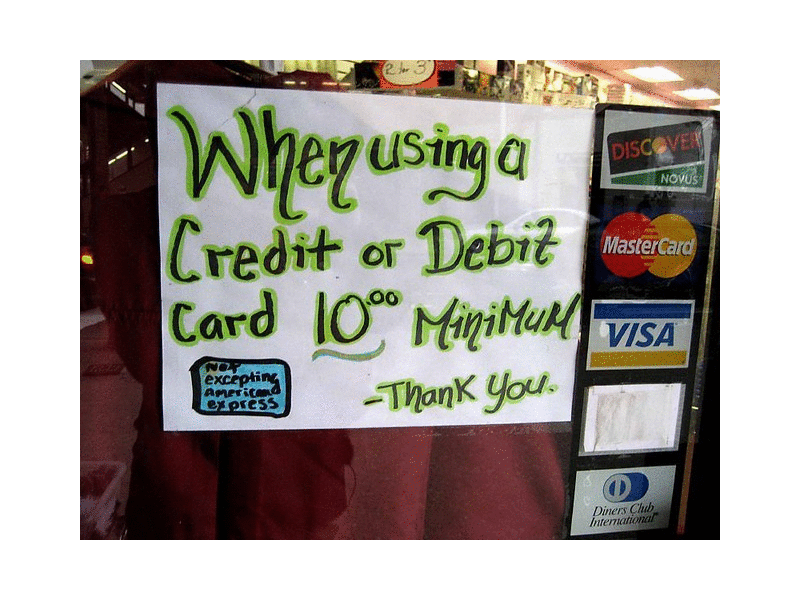Bitcoin 101: Micropayments
Right now, the world of Bitcoin seems pretty confusing to most who aren’t familiar with it. A lot of times when someone first hears about it, it’s portrayed aggressively. Claims like “It’s so much better than the current system!” and “It’ll be the new global currency!” are some of the first to be thrown out. People don’t often take the time to run through the nuances of Bitcoin and its advantages over traditional systems.
That’s the point of Bitcoin 101—to dial back the intensity and break things down into smaller, more digestible segments. We believe this makes both learning about Bitcoin and teaching others about Bitcoin much more appealing.
This edition of Bitcoin 101 highlights one aspect of Bitcoin that first sent me reeling down the rabbit hole: micropayments.
Fiat money is only divisible to a certain extent. The US dollar, for example, can be broken down into quarters, dimes, nickels, and pennies. These days, it seems like the best uses for those coins are limited to gumball machines, cash payments on sales tax, and donating to panhandlers.
Fiat money is a currency without intrinsic value that has been established as money, often by government regulation. The U.S. Dollar is fiat money—it’s just paper, but it has value because the U.S. Government says it does.
In 2016, it was estimated that Americans throw away $62 million in coins each year. Fast-forward three years and companies everywhere are paving the way to an increasingly cashless world—heck, even Apple has a credit card now.
That problem of limited divisibility becomes clearer when you combine it with another fundamental fiat issue: low-value transactions aren’t compatible with existing credit/debit banking systems. When you pay for something with a credit card, anywhere from 2% to 3% goes to parties other than the merchant you’re paying—the credit card company (e.g. Mastercard or Visa), the payment processor, or the bank. The lower the value of the transaction, the more those fees impact a merchant’s profit margin. This is why you see restaurants and stores mandating minimum purchase amounts for use of a credit card.

Bitcoin solves for both of these issues with its impressive divisibility. Whereas a penny is worth one-hundredth of a dollar, Bitcoin can be broken down into one hundred millionths. That one hundred millionth of a Bitcoin is referred to as one satoshi. At the time of writing, 1 satoshi is equal to $0.0000608062. Because of Bitcoin’s relatively lower transaction fees (especially on the Lightning Network), you can send extremely small payments cheaply and efficiently.
Possible use cases
The full use cases of a system that can be broken down into such small payment amounts is currently unknown. But we do have some ideas of how it could possibly be used.
Content monetization
One of the most intriguing use cases for micropayments is content monetization. Today, newspapers and media companies have limited options when it comes to content monetization. They typically make money three ways:
- On-site advertisements—advertisers pay the media company each time their ad is shown or each time someone clicks on it.
- Subscription fees—someone pays a monthly or annual fee and gains access to all content.
- Data sales—media companies will sell your personal data (email address, demographic information, etc.) to third parties.
Bitcoin’s divisibility would allow content creators to charge a seemingly negligible amount of money for users to access their content, and opens doors for new payment structures: per hour, per video play, per paragraph, per news alert, and more.
Why can’t we do the same thing with credit cards today? If a media company were to charge per article, for example, they’d have to sacrifice 2%-3% in transaction fees on each purchase. In addition, they’d have to wait 3-5 days for those transactions to be settled via the credit card processors. Accounting for this would be an absolute nightmare.
Spam defense
Another strong use case for micropayments is warding off spammers. Right now, any spammer can obtain multiple email addresses and drop them into an email platform to barrage their targets.
Email systems or social media platforms could put a stop to this by requiring a micropayment of Bitcoin for each message sent. This amount is trivial to a legitimate user, but still large enough to add up quickly to a spammer. Having to pay to message thousands of people only for the majority of those messages to get caught in spam filters isn’t very enticing. Now if only someone could find a way to apply this to stopping robocalls...
Moving forward
Micropayments create a strong supporting argument for Bitcoin’s usability. When merchants no longer have to worry about their margins being crushed, they can offer additional payment options and more flexible pricing. Content creators can have new revenue streams that allow them to turn away intrusive ads in favor of a better user experience. Email and messaging apps can effectively disincentivize spammers.
We're still very early in micropayments experimentation. Nick Szabo presents a convincing critical case of micropayments arguing that mental costs become the true transaction costs, even if micropayments technology becomes prevalent. Only time will tell how this might play out.
It’s easy to see how these changes get people pretty excited about Bitcoin, and they’re really only the tip of the iceberg.
Have a suggestion for our next Bitcoin 101? Send us a tweet @CasaHODL
